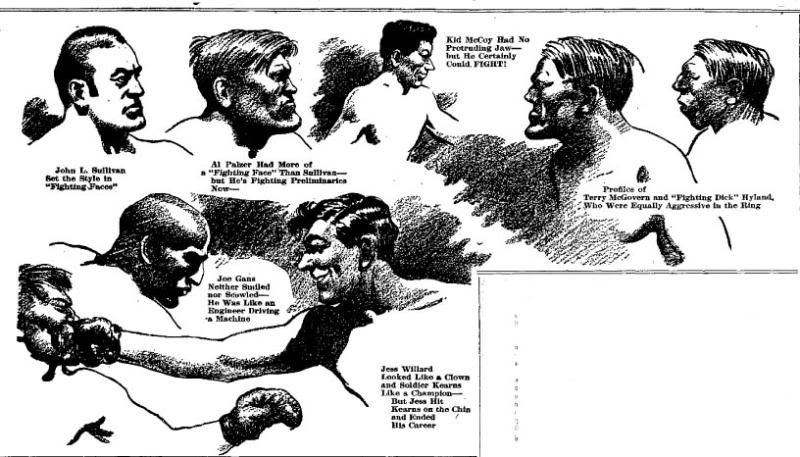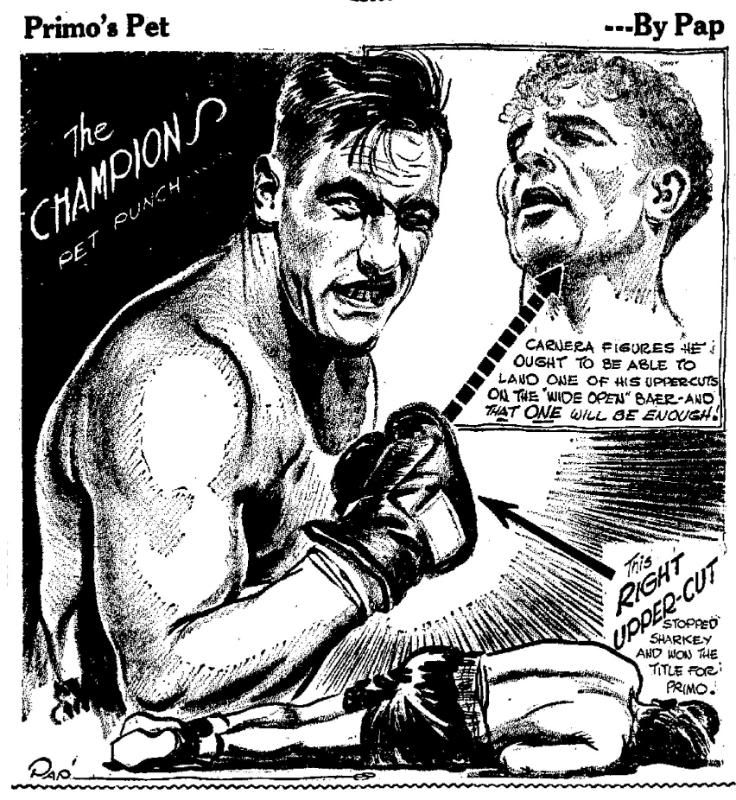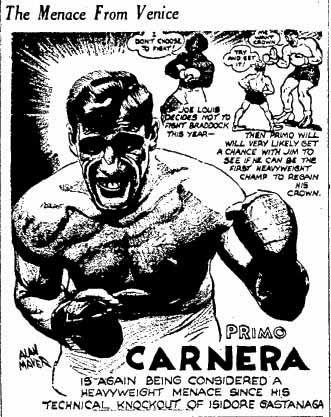The Syracuse Herald
17 Dec 1911
Robert Edgren
There are just three world's boxing champions in America today, Johnny Coulon, bantamweight; Abe Attell. featherweight, and Ad Wolgast, lightweight. Of these Coulon and Attell obtained their titles by claiming them, and then defending them against all comers. Fortunately, they have been successful for several years, and there can be no question that they have earned a right to call themselves champions. There's no flaw in the title to-day.
With Wolgast it is a different affair. Wolgast is the only champion of the world in the ring (since Johnson's retirement) who earned his title by whipping the former holder. Wolgast whipped Battling Nelson, who had defeated Joe Gans, who had defeated Frank Erne, who had defeated "Kid" Lavigne, who had won the championship of America and clinched his right to the world's championship by going to England and knocking out the famous Dick Burge, greatest lightweight; known to England's ring followers in many long years—perhaps in all the history of the game.
There is no possible flaw in Wolgast's title. He is of the direct descent from the old line of kings of the lightweight class. When he stopped Battling Nelson in that gory ring at Port Richmond, Cal., he won his title on the spot, and there are only three ways in which he can lose it again. He can retire from the ring or die, or be officially beaten in a battle where his opponent makes the weight. Wolgast's enforced retirement for a few months, owing to an operation, doesn't invalidate his right to be called champion according to our American custom.
Ad will come out and fight again as soon as he is able to, for he's the busiest little champion we have had in some time, with the possible exception of Battling Nelson. Bat Nelson was a better champion than Wolgast in one way. He was so willing to fight that he always gave his victims a second chance if they wanted it. He fought Britt, Corbett and Gans each two or
three times, these being the toughest men on his list. Perhaps Wolgast will do the same after a while. Up to date he’s been keep busy by the new claimant, and to give him credit for his work, he surely has shown that he's the best in the world over the long route.
Now Johnny Coulon — no one disputes his right to be called champion in his class, although he came into the title in a roundabout way. Frankie Neil years ago took the bantam championship from Harry Forbes in San Francisco. Neil, later on, went to England expecting to pick up some easy money, and was trimmed by Joe Bowker in his first fight. Nell, sr., sent up some frightful
shrieks of agony over the decision, but that made no difference. Bowker won the decision, and no doubt he was entitled to It. Bowker didn't pass the title along legitimately. He grew out of the class and began fighting featherweights. He lost several battles by the knockout route, came to America, was whipped by Al Delmont in Boston and Tommy O'Toole In Philadelphia, and went back to England and oblivion.
The bantamweight title had no real claimant, Delmont was over the weight and was mixing with featherweights and lightweights. Johnny Coulon, after beating Murphy, the 105-pound champion, claimed the bantam title and began "defending" it at 115 pounds ringside.
17 Dec 1911
Robert Edgren
There are just three world's boxing champions in America today, Johnny Coulon, bantamweight; Abe Attell. featherweight, and Ad Wolgast, lightweight. Of these Coulon and Attell obtained their titles by claiming them, and then defending them against all comers. Fortunately, they have been successful for several years, and there can be no question that they have earned a right to call themselves champions. There's no flaw in the title to-day.
With Wolgast it is a different affair. Wolgast is the only champion of the world in the ring (since Johnson's retirement) who earned his title by whipping the former holder. Wolgast whipped Battling Nelson, who had defeated Joe Gans, who had defeated Frank Erne, who had defeated "Kid" Lavigne, who had won the championship of America and clinched his right to the world's championship by going to England and knocking out the famous Dick Burge, greatest lightweight; known to England's ring followers in many long years—perhaps in all the history of the game.
There is no possible flaw in Wolgast's title. He is of the direct descent from the old line of kings of the lightweight class. When he stopped Battling Nelson in that gory ring at Port Richmond, Cal., he won his title on the spot, and there are only three ways in which he can lose it again. He can retire from the ring or die, or be officially beaten in a battle where his opponent makes the weight. Wolgast's enforced retirement for a few months, owing to an operation, doesn't invalidate his right to be called champion according to our American custom.
Ad will come out and fight again as soon as he is able to, for he's the busiest little champion we have had in some time, with the possible exception of Battling Nelson. Bat Nelson was a better champion than Wolgast in one way. He was so willing to fight that he always gave his victims a second chance if they wanted it. He fought Britt, Corbett and Gans each two or
three times, these being the toughest men on his list. Perhaps Wolgast will do the same after a while. Up to date he’s been keep busy by the new claimant, and to give him credit for his work, he surely has shown that he's the best in the world over the long route.
Now Johnny Coulon — no one disputes his right to be called champion in his class, although he came into the title in a roundabout way. Frankie Neil years ago took the bantam championship from Harry Forbes in San Francisco. Neil, later on, went to England expecting to pick up some easy money, and was trimmed by Joe Bowker in his first fight. Nell, sr., sent up some frightful
shrieks of agony over the decision, but that made no difference. Bowker won the decision, and no doubt he was entitled to It. Bowker didn't pass the title along legitimately. He grew out of the class and began fighting featherweights. He lost several battles by the knockout route, came to America, was whipped by Al Delmont in Boston and Tommy O'Toole In Philadelphia, and went back to England and oblivion.
The bantamweight title had no real claimant, Delmont was over the weight and was mixing with featherweights and lightweights. Johnny Coulon, after beating Murphy, the 105-pound champion, claimed the bantam title and began "defending" it at 115 pounds ringside.




Comment